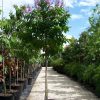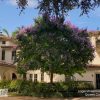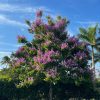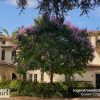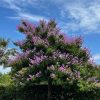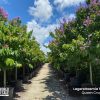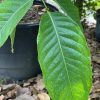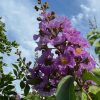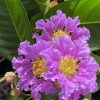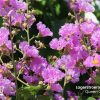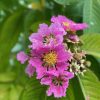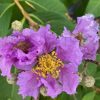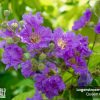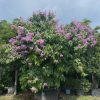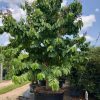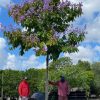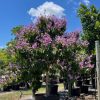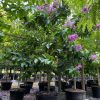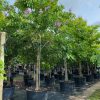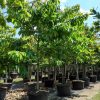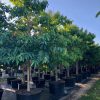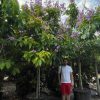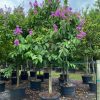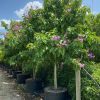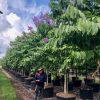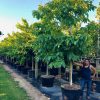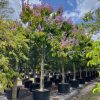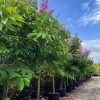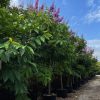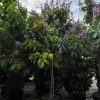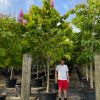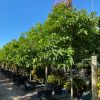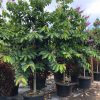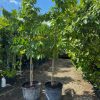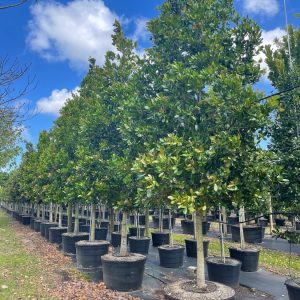Description
Queen crape myrtle tree description
Lagerstroemia Speciosa (Queen crape myrtle) closely resembles the Lagerstroemia Tuscarora tree. Yet, the Queen crape mytrle tree is larger and can reach a height of 60 feet with a spread of up to 40 feet.
Flowers are borne on foot-long inflorescences of large 2 – 3 inch wide showy blooms, pink to lavender in color. Fruits are dry, hard brown round oval capsules 1 – 2 inches long: seeds and cuttings are for propagation. The leaves are used to make medicinal tea for several ailments. The wood is durable and used in construction. Lagerstroemia Speciosa (Queen crape-myrtle) can be grown in a range of soil types, providing they are well-drained. It is frost sensitive, otherwise very urban tolerant.
Lagerstroemia Speciosa cultivation and landscape application
In cultivation, the Lagerstroemia Speciosa tree is typically smaller. It also has an upright, dense, rounded crown. The bark is an attractive gray color, smooth and flaky. The leaves are green, leathery, deciduous, opposite or sub-opposite, oval to elliptical and 4 to 12 inches long. Leaves are shed in winter after turning a red color; in the spring when the tree is leafless flowering occurs.
Young trees need pruning as well as later to maintain the crown shape.
Queen crape myrtle tree is ideal as a shade and specimen tree, for residential yards and gardens, in parks, along sidewalks, parking lot islands and in large containers.
Other name: Giant Crape Myrtle







































